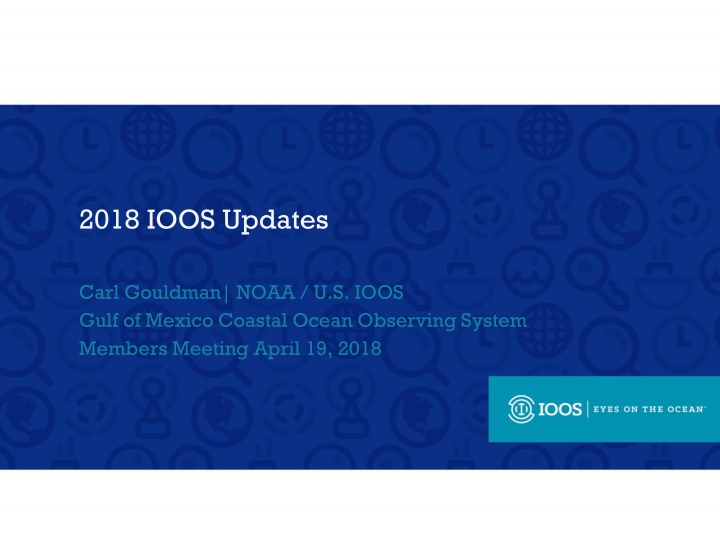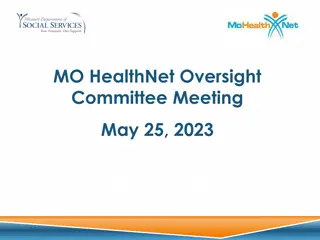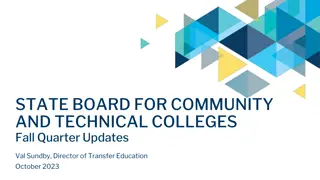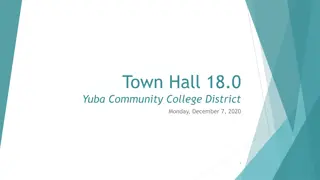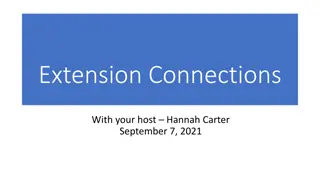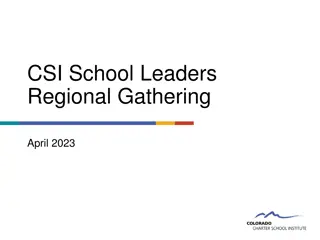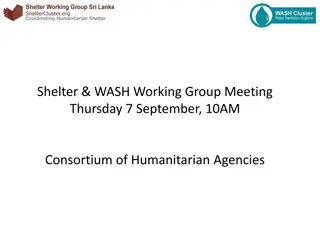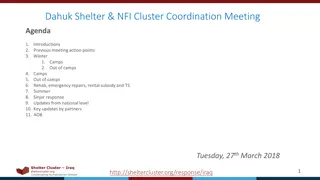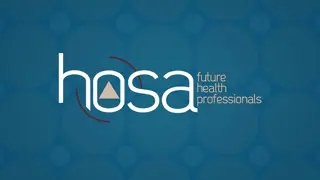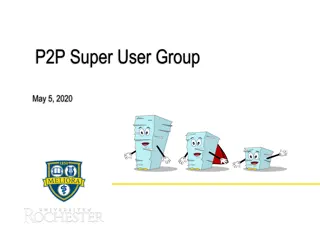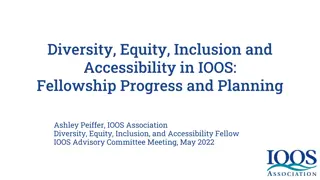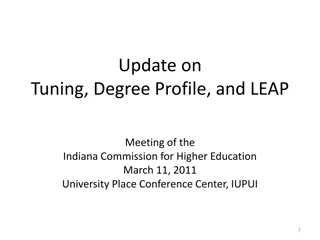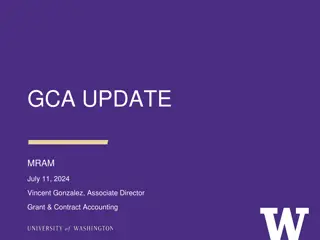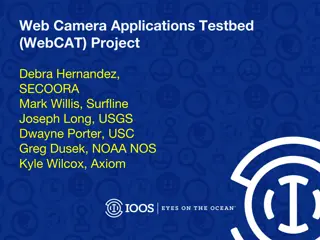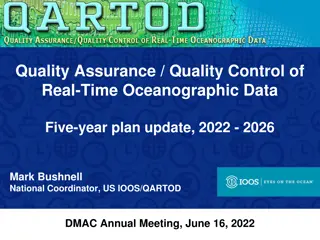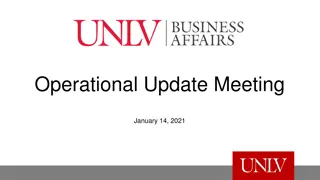U.S. IOOS Updates and Initiatives
The U.S. Integrated Ocean Observing System (IOOS) plays a crucial role in providing ocean, coastal, and Great Lakes data to decision-makers. With a focus on improving lives and livelihoods through high-quality information, IOOS collaborates on global partnerships and strategic plans. Core variables span physics, biogeochemistry, biology, and ecosystems, enhancing understanding of marine environments. The enacted budgets demonstrate continued support for IOOS initiatives, highlighting the importance of ongoing funding for ocean observation efforts.
Download Presentation

Please find below an Image/Link to download the presentation.
The content on the website is provided AS IS for your information and personal use only. It may not be sold, licensed, or shared on other websites without obtaining consent from the author.If you encounter any issues during the download, it is possible that the publisher has removed the file from their server.
You are allowed to download the files provided on this website for personal or commercial use, subject to the condition that they are used lawfully. All files are the property of their respective owners.
The content on the website is provided AS IS for your information and personal use only. It may not be sold, licensed, or shared on other websites without obtaining consent from the author.
E N D
Presentation Transcript
2018 IOOS Updates Carl Gouldman| NOAA / U.S. IOOS Gulf of Mexico Coastal Ocean Observing System Members Meeting April 19, 2018
OECD Ocean Economy 2030 Ocean based industries generated USD $1.5T in 2010 & 31M FTE in 2010 2030 Ocean industry projected to $3 Trillion & 40M FTE IOOS support for future OECD work Collaboration Economic valuation Boosting innovation Organisation of Economic Cooperation and Development
U.S. IOOS: Program Local to Global Partnership effort that leverages dispersed national investments to deliver ocean, coastal and Great Lakes data relevant to decision-makers. Global Component US contribution to Global Ocean Observing System (GOOS) 1 of 15 Regional Alliances of GOOS National Component 17 Federal agencies Regional Component 11 Regional Associations Academia, state/local/tribal government, private industry
New IOOS Strategic Plan Vision - Improve lives and livelihoods with ocean, coastal, and Great Lakes information Mission - To produce, integrate, and communicate high quality ocean, coastal and Great Lakes information that meets the safety, economic, and stewardship needs of the nation. 4
IOOS refreshed Core Variables PHYSICS Bathymetry Bottom character Currents Heat flux Ice distribution Salinity Sea level Surface waves Stream flow Temperature Wind speed and direction BIOGEOCHEMISTRY Acidity Colored dissolved organic matter Contaminants Dissolved nutrients Dissolved Oxygen Ocean color Optical properties Pathogens Partial pressure of CO2 Total suspended matter BIOLOGY & ECOSYSTEMS Biological vital rates Coral species and abundance Fish species/abundance Invertebrate species and abundance Marine mammal species/abundance Microbial species/abundance/activity Nekton diet Phytoplankton species/abundance Sea birds species/abundance Sea turtles species/abundance Submerged aquatic vegetation species/abundance Sound Zooplankton species/abundance https://cdn.ioos.noaa.gov/ media/2018/02/US-IOOS- Enterprise-Strategic- Plan_v101_secure.pdf 5
U.S. IOOS Enacted and Presidents Budgets FY04-19 NOAA National Ocean Service Navigation, Observations, and Positioning: National IOOS component FY18 Omnibus $6.8M & Regional IOOS Observations $35M Estimated Enacted levels are post rescission totals for each year Request = the President s Budget Request 6
U.S. IOOS Enacted and Presidents Budgets FY12-19 NOAA National Ocean Service Navigation, Observations, and Positioning: National IOOS component FY18 Omnibus $6.8M & Regional IOOS Observations $35M Estimated Enacted levels are post rescission totals for each year Request = the President s Budget Request 7
IOOS Regions meet societal needs Stakeholder outreach Observations Information products Data Management Global Telecommunication System (GTS)
GCOOS Highlights Success stories: GCOOS Certified Nov. 2017, signed MOA March 2018 GCOOS Gulf Citizen Science Portal recognized in Partnership Category Drs. Shin Kobara and Chris Simoniello Thank you: for hosting the IOOS Advisory Committee meeting - October 2017 Hosting the successful IOOS Animal Telemetry Network workshop - Jan 2018 Filling Surface Current gaps - Installing HF radars in LA/mouth of Mississippi River GCOOS is boosting our blue economy partnering, delivering, and by supporting decisions = making it work 9
GCOOS Get Ready? Upcoming opportunities GCOOS is Certified! Gliders, gliders, everywhere Observations - Loop Current Study (National Academies of Sciences) Other RESTORE projects/funding NOAA Water Initiative http://www.noaa.gov/water NOS modeling portfolio & Coastal and Ocean Modeling Testbed new projects & 3 technologies (Adcirc, ROMs, and FVCOM) NOAA & USGS, NOAA & USACE coasts, coastal processes, and water https://uscoastalresearch.org/ 10
Questions? Goal 5 of Strategic Plan: Increase the reach and effectiveness of IOOS through partnerships, stakeholder engagement, and investment in Enterprise excellence Carl.Gouldman@noaa.gov https://ioos.noaa.gov/ ioos.us
Glider applications and inform ecosystem health. Gliders characterize ocean features Dissolved Oxygen (mg/L) Chlorophyll Concentration (ug/L) Temperature (C) MARACOOS/Rutgers research: integrated observations used to identify ahead-of-eye cooling of subsurface water temperatures Assimilation of glider data may improve hurricane-intensity forecasts Water quality information for local fisheries Glenn S.M. et al., Stratified coastal ocean interactions with tropical cyclones. Nature Communications. 2016
Gliders Feb 18 https://gliders.ioos.us/ IOOS lead: becky.baltes@noaa.gov
Profiling Glider Missions Climate/Ecosystem/Fisheries Management/Water Quality HAB CalCOFI Fish Tracking Hypoxia SoCal Ni o Index Hurricane Forecasting Response to Oil Spill Exercising the Network Deep Water Horizon Alaska 15 15
High Frequency Radar applications and oil spill response. HFR surface currents for search and rescue NOAA environmental disaster response tool Search And Rescue Optimal Planning System (SAROPS) Tracking and forecast of surface pollutants enables decision makers on beach closures. Integrated HFR into SAROPS decreased the USCG search area. The Mid-Atlantic region was noted for high quality ocean data compared to the rest of the world. -Orsted, International Offshore Wind Partnering Conference The U.S. is setting the standard for ocean data. HFRNet, Scripps
U.S. IOOS: Program Overview Authorizing legislation Integrated Coastal Ocean Observing System (ICOOS) Act (P.L. No 111-11, March 2009) Mission Areas Predicting Weather & Climate variability Safe and Efficient Transportation and Commerce Preparedness and Risk Reduction for Coastal Communities Healthy ecosystems and water quality 12
Regional applications of integrated observations West Coast HABs Lake Erie HAB/hypoxia Gulf of Maine lobster industry Drinking water impacts Subsurface observations from GLOS/GLERL buoys Informs municipal water districts/intake managers Maine s largest commercial fishery NERACOOS buoys: only source of real-time subsurface water temperatures Forecast start date of lobster fishery to optimize the harvest Emergency closures of crab fisheries Environmental Sample Processor (new technology) used to detect toxins HAB bulletins, forecasts vital to shellfish growers, fishermen, marine mammal rescue groups We receive valuable and complex information in real time with these buoys. That data is an important addition to our treatment tool kit. - City of Cleveland Water Dept Photo credit: Stephanie Moore Map: CeNCOOS/SCCOOS Image: Gulf of Maine Research Institute Photo credit (left): Brad Woolhiser Lower photo credit: Dave Zapotosky
